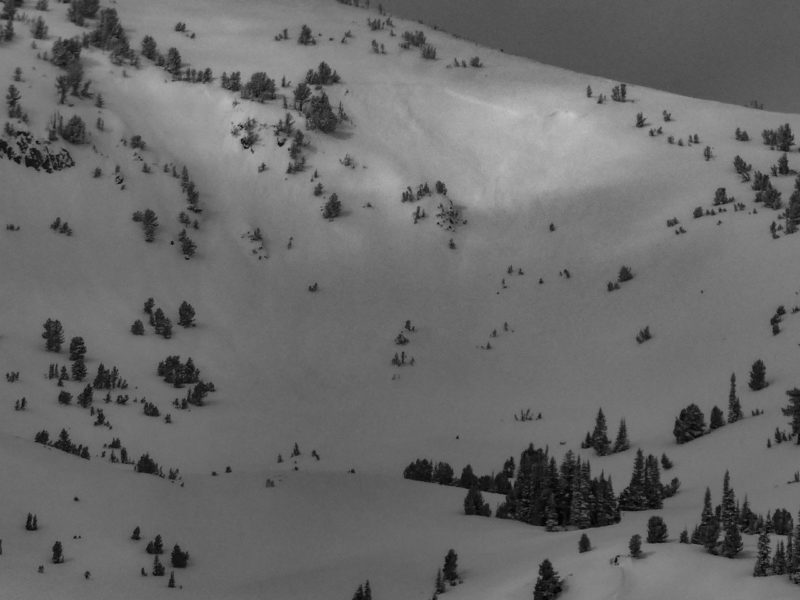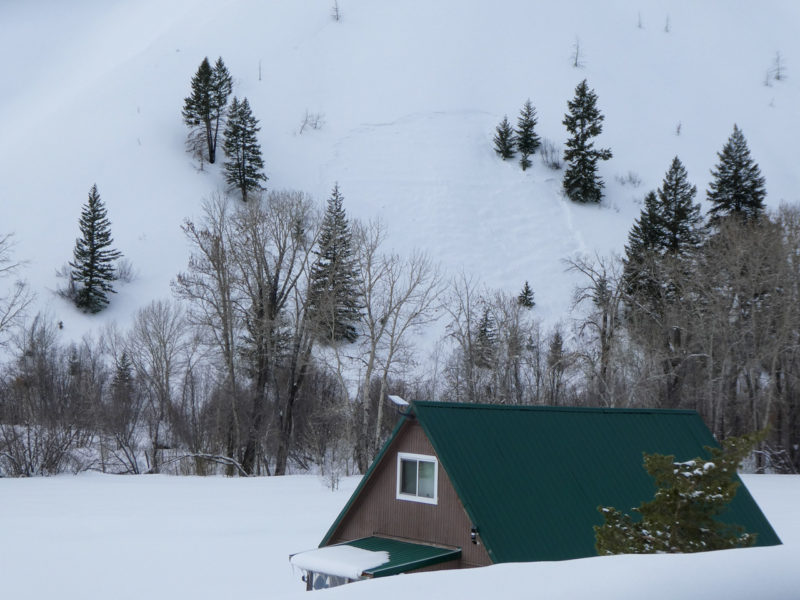Basic Information
Observation Details
Observation Date:
March 7, 2023Submitted:
March 7, 2023Observer:
SAC - DavisZone or Region:
Soldier and Wood River Valley MtnsLocation:
Couch Summit - Salt Bowns Rd (All aspects, 5,900'-8,000')Signs of Unstable Snow
Recent Avalanches?
None ObservedCracking?
IsolatedCollapsing?
IsolatedSnow Stability
Stability Rating:
FairConfidence in Rating:
ModerateStability Trend:
SteadyBottom Line
Weak snow underlies a ~40-70 cm slab on most slopes; triggering a slide seemed likely. Shaded slopes were consistently the ugliest. Sunnier slopes were highly variable; some looked bad and others were held together by strong crusts.
Media/Attachments
Advanced Information
Weather Summary
Cloud Cover:
Mostly CloudyTemperature:
Teens FWind:
Light , SWNew/Recent Snowfall:
20-70 cm (sun, shade) over late Feb weak layers. ~1 cm overnight and <2 cm (squally) on my tour.Cold and mostly grey day. Sunshine in the morning gave way to increasing squally clouds and light snowfall (<2 cm). Snow was sifting to quickly fill my skin track at middle elevation. There is an abnormal amount of SAFT on middle elevation ridges that are usually stripped clean by post-frontal NW wind.
Avalanche Observations
| # | Date | Location | Size | Type | Bed Sfc | Depth | Trigger | Photos | Details |
|---|---|---|---|---|---|---|---|---|---|
| 1 |
Mar 5, 2023 (+/- 1 day) |
Soldier Mtns - Big Bowl SE 9100ft |
D2 | N-Natural |

|
Report |
Snowpack Observations
Storm totals (since 2/26) vary widely with aspect. Sunnier slopes held as little as 20 cm with up to 3 crusts which made for highly variable and unpredictable conditions. On some slopes the sun had worked over any weaker snow, pushing melt water through the pack and building thick crusts. On other slopes, there were facets and weaker crusts. This variability makes for a complicated piecemeal stability and eventually (potentially) patchwork avalanches when the next storm arrives.
Shaded slopes held up to 70 cm with no obvious crusts. These aspects had a more uniformly ugly structure. Recent snows sit atop 2/26 and 2/18 weak layers. Both presented as thin intervals of large, weak facets (4F and F) intermixed with faceted old surface hoar (see photo below).
Avalanche Problems
| Problem | Location | Distribution | Sensitivity | Size | Comments |
|---|---|---|---|---|---|
 Persistent Slab
Persistent Slab
|
|
Layer Depth/Date: 20-70 cm Weak Layer(s): Feb 18, 2023 (FCsf) Feb 26, 2023 (FCsf) Comments: Shaded where expected. There is a dense, thick slab here with up to 3 MFcr on sunnier slopes. A 50-70 cm thick slab on shaded aspects sits atop both 2/26 and 2/18 (both distinct but only 10 cm apart). I experienced a large rumbling collapse on WNW @ 7,000'. This problem would keep me out of very steep slopes at lower elevation. |
I found freshly forming thin wind slabs and sensitive cornice growth near middle-elevation ridges. These were not large enough to cause alarm. Previous wind loading can't likely be separated from the persistent problem, it just makes it worse in exposed terrain.
Terrain Use
I avoided avalanche terrain. The abnormal amount of snow on commonly stripped ridgelines made me feel uncomfortably connected to avalanche terrain on either side. I gave steep slopes a larger-than-normal buffer today, anticipating remote triggering and hard slabs pulling back onto gentle ridges.


